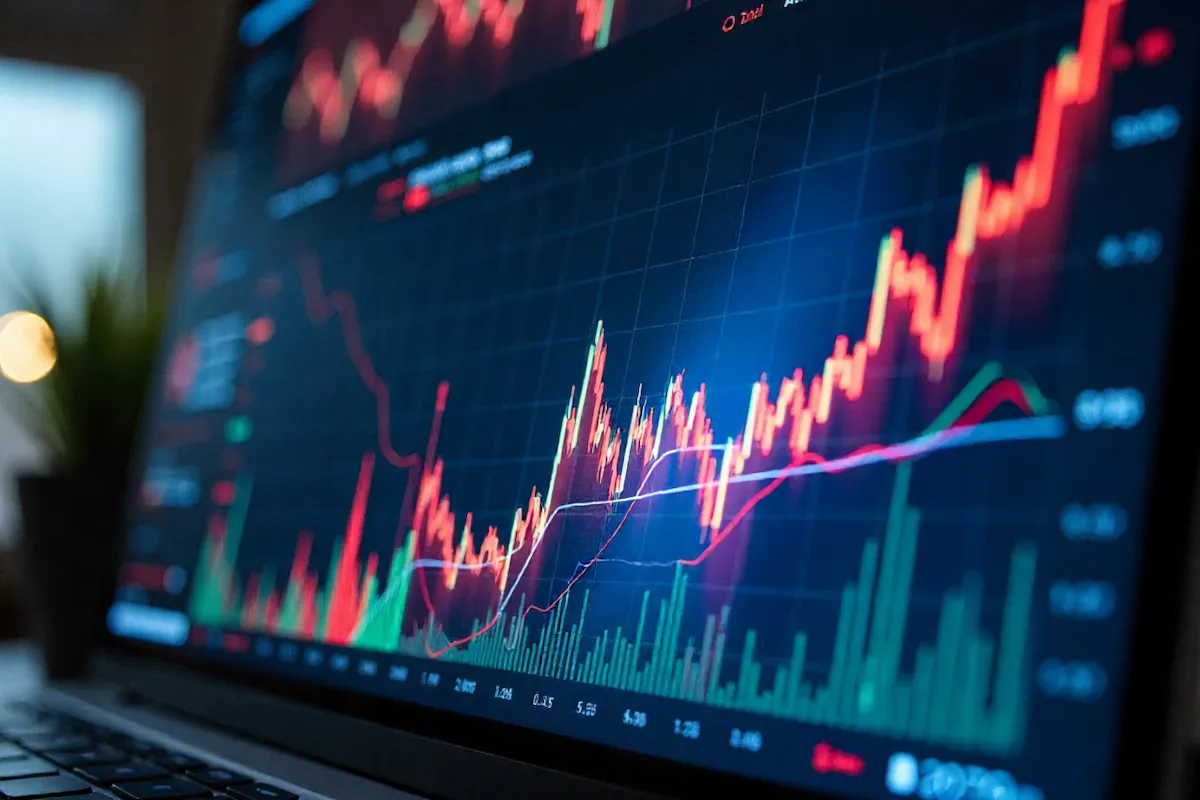NFTs just pulled ahead of DeFi in daily active wallets for the first time in years, marking a significant milestone in Web3 adoption. July 2025 saw NFT trading volumes nearly double to $530 million, with average prices climbing to $105. This signals a renewed appetite for digital ownership despite a market still recovering from past hype cycles.
Key takeaways
-
NFTs surpassed DeFi in daily active wallets, hitting 3.85 million interactions.
-
Trading volumes surged 96% in July 2025, with average prices doubling.
-
Blur and OpenSea drove much of the renewed market activity.
-
DeFi still holds dominance in liquidity, reaching $270 billion TVL.
-
NFTs are regaining investor confidence as a driver of Web3 engagement.
NFTs Outpace DeFi in Daily Users
NFTs edging past DeFi in active wallets signals a meaningful shift in user behavior. In July, 3.85 million daily active wallets interacted with NFT platforms, slightly more than DeFi. This was not a temporary spike but a sign of changing engagement patterns across Web3.
Once dismissed as short-lived “JPEG speculation,” NFTs are showing resilience. The surge wasn’t just driven by high-end art sales. It came from broader participation in gamified platforms, community-driven collections, and trading activity that offers more interactive appeal than passive yield farming.
What the Numbers Say About NFT Growth
According to DappRadar, the NFT market has experienced a significant increase in trading volume. It rose by 96% to hit $530 million in July. The average sale price for NFTs has doubled and is currently $105.
While price jumps often bring in speculators, the real indicator of a healthy market is active participation from wallet users. Interestingly, there is now noticeable liquidity and faster sales happening across mid-tier NFT collections, along with the well-known blue-chip projects.
This shows that the market is expanding, inviting new participants and diversifying beyond a few high-profile assets. Historically, when we see this kind of activity, it often leads to exciting innovations in the space.
Blur and OpenSea Role Fueling the NFT Revival
Blur and OpenSea played an important role in boosting momentum in July. Blur’s incentive programs have drawn in serious traders. Meanwhile, OpenSea continues to be the preferred site for casual, entry-level buyers.
Having professional trading platforms alongside beginner-friendly options creates a balance that helps market growth. This situation resembles how Coinbase and Binance once served different segments of crypto adoption, ultimately contributing to the same growth cycle.
$270 Billion in DeFi Liquidity vs NFT Engagement
DeFi remains a powerhouse with a record $270 billion in total value locked, up 30% month-over-month. Ethereum maintains 63% of this liquidity, with notable growth from layer-2 solutions like Arbitrum and Optimism.
The current market suggests a complementary relationship rather than direct competition between NFTs and DeFi. DeFi offers yield generation and liquidity management, while NFTs drive cultural engagement and user interaction. The interplay between these sectors may be key to pushing Web3 into sustainable, mainstream adoption.
What This NFT Surge Means for Traders, Builders, and Early Adopters
The current NFT market differs from the hype-driven cycles of 2021. Utility is playing a larger role, with NFTs integrated into gaming, event ticketing, and digital identity—appealing to audiences beyond crypto-native circles.
For traders, the surge means higher liquidity and more chances for price discovery. Builders can reach a larger, more active audience to test and grow their ideas. Long-term holders from previous cycles now enjoy stronger community positions, which often act as a form of soft capital for project growth.
Timing NFT entries is increasingly tied to metrics like wallet activity, transaction speed, and social sentiment rather than floor prices alone. These indicators provide early signals of genuine momentum.
Can NFTs Maintain Their Momentum Through 2025 and Beyond?
Sustaining momentum will require more than short-term trading incentives. Broader adoption depends on stronger on-chain utility, reduced onboarding friction, and tighter integration with mainstream applications.
The July data shows NFTs remain highly effective at capturing attention and driving participation. If engagement can be sustained while expanding real-world use cases, this could signal the start of a longer-term growth phase rather than another brief rally.
Market watchers will continue to monitor project traction, user activity, and the balance between speculative trading and functional utility. The current figures suggest the NFT comeback is more than just a passing trend, it may be the next growth driver for Web3.



